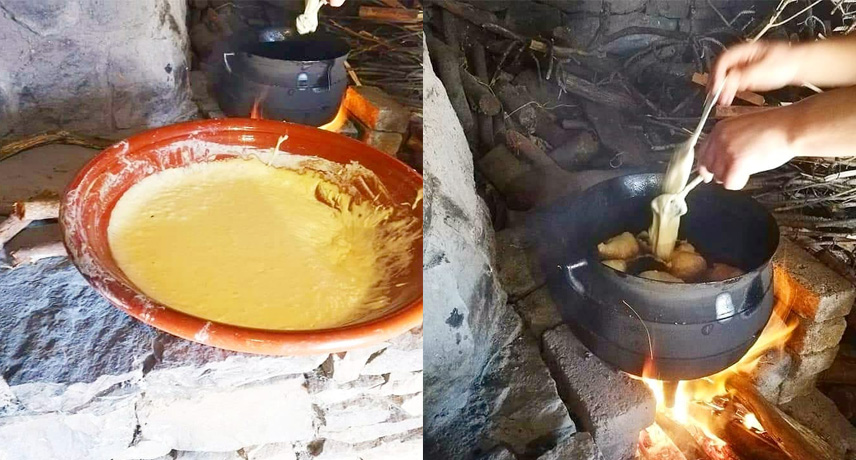Fri, 21 Feb 2020

Carnival is for many, more than just disguises and games, but there is no Carnival without malassadas and sonhos accompanied by the traditional honey from Madeira.
Origin of the ‘malassada’
The malassada was made for the first time by residents of Madeira Island and supposedly were created by Catholics who needed to spend delicacies such as sugar and butter they had at home in order to prepare for the Lent (which as we all know is a time of some gastronomic sacrifices). This delicacy is always eaten with a special accompaniment, honey made of sugar cane, which has been essential in Madeiran sweets. This traditional delicacy also dates back to the time of sugar production in the archipelago in the 15th century, and still remains with great esteem. Sugarcane honey began production in 1938, by ‘Fábrica do Mel’, now known as Ribeiro Sêco's Sugarcane Factory, one of the island's main factories for processing sugar cane, along with the Calheta mill, which started its activity by the middle of the 19th century.
First references about ‘malassadas’
The first term used for this famous carnival sweet was identified in 1609, in a Portuguese dictionary. But the first time it was mentioned in the historical documentation of Madeira, was in the cookbook of the ‘’ Convento da Encarnação ’’, in 1762, shown in the picture below.
Why is it called malassada?
In traditional Madeira the name ‘‘malassada’’ means undercooked in english and it comes from the pasta, because is not fully cook inside, as well as the outsider.
Madeiran influences in this confectionery
In Madeira, it is traditional to eat this confectionery during Carnival, and with sugarcane honey made in Madeira. There are not many records about the beginning of the making of this product, but it is certain that in Canary Islands this tradition is also celebrated in the same way due to the Madeiran influences and in Hawaii, with the same name. This recipe was taken by the portuguese who emigrated from Madeira, to go to work in the sugar cane plantation from 1878. This spread became so great that it gave rise to the day of Malassadas (Mardi gras), or ‘the fat Tuesday’, in this American state, being able to find this in the festival of " Punahou School Carnival ", which are often filled with chocolate.
Also on the island of Rhodes and southeastern Massachusetts, there is a large population of Portuguese Americans who often serve portuguese delicacies, including malassadas.

Malassadas recipe
- 1kg of wheat flour
- 750ml semi-skimmed milk
- 6 Eggs
- 30g of baker's yeast
- 1 teaspoon of salt
- Zest of 1 lemon
- Frying oil
- Honey from Madeira
How to Make / Preparation:
• Put the flour, salt and sugar in a bowl;
• Melt the yeast in the warm water and put it in the bowl, beat with the eggs until “air bubbles” are formed;
• Add the milk little by little, stirring constantly;
• Let it rest for 2 hours, cover with aluminum foil or a cloth;
• It is essential that the deep fryer is very hot before starting to fry and that it contains a good height of oil. Put the dough in the fryer with the help of 2 spoons,
• After taking it out of the fryer, let it cool on absorbent paper and serve it with honey from Madeira.
For 50 malassadas
Cooking time 2 hours
Difference between "Sonhos" Dreams and Malassadas:
Sonhos are less dense and more fluffy than malassadas, but also drizzled with honey. Sonhos are light and do not have much filling, otherwise the malassadas are consistent and stuffed. The next day they have been made, they become stiff.

Sonhos recipe
- 200 g flour
- 2 dl water
- 75 g butter
- 2 lemon peel
- 1 c. salt coffee
- 5 eggs
- Sugar
- cinnamon powder
How to Make / Preparation:
• Put the water on the stove with the butter cut into pieces, the lemon peels and the salt until boiling;
• Remove the pan from the heat, add the sifted flour and stir;
• The dough should form a ball around the spoon, separating it from the pan;
• Bring the dough back to a low heat to dry a little more and then pour it into the container where it will be beaten (by hand or in an electric machine).
• Put the eggs in a container and beat lightly, adding them to the dough and beating continuously;
• Fry this mass in the oil, which will go to the bottom of the container for 1 or 2 minutes, and then let it cook until golden brown;
• Drain on absorbent paper and eat sprinkled with sugar or with sugar and cinnamon;
Cooking time: 1 hour

